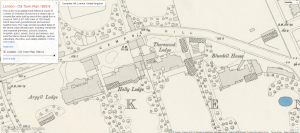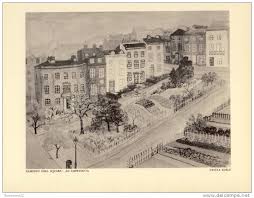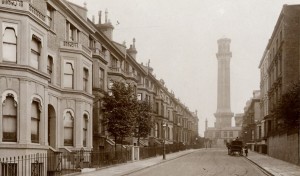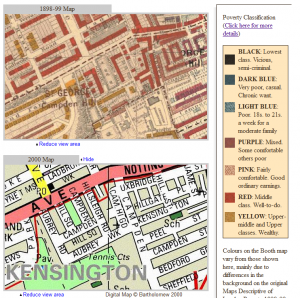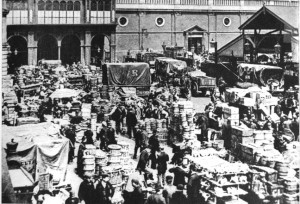In Amy Levy’s Romance of a Shop, Campden Hill is one of the first settings we are introduced to. In the first paragraph of the novel, the location is described: “There stood on Campden Hill, a large, dun-colored house, enclosed by a walled-in garden of several acres in extent. It belonged to no particular order of architecture, and was more suggestive of comfort than of splendour, with its great windows, and rambling, nondescript proportions” (Levy). What Levy suggests, just by the description of the home, it is modest, though large and with an impressive quality of land. So at the very least it is a well-to-do setting we are introducing our readers to the characters.
Located in South Kensington, near Holland Park, it is the location of the home belonging to the Lorimer sisters. The first three chapters of the book are set in Campden Hill before the Lorimer sisters are forced to sell their possessions and move elsewhere.
The Lorimers seemed to have once been a well-to-do family before their father’s death. Likewise their neighbors, for example Connie and her family, seem to be in favorable status as well. But when the sisters no longer have any money to support themselves, they decide to pursue photography as a serious profession; thus, they lose their home in Campden Hill and move to Upper Baker Street in London.
Here is a view of Campden Hill on the Victorian Map:
And here are other Victorian era pictures of Campden Hill to better showcase what its surroundings were:
Once the sisters leave Campden Hill, it is the last time it is revisited in the novel, though it remains important as it establishes the status quo of the sisters and who they are before the plot of the novel really begins.
Also here is a picture to show what kind of area Campden Hill was from the Charles Booth Online Archive:
As I had mentioned, the area itself contained many well-to-do middle class families with the wealthy classes. Because of the lack of black, there isn’t much criminal activity.
According to Old Bailey, the crime rate seems low in the area. The only crimes I was able to locate included forgery, theft, arson, embezzlement, fraud, and perjury (def: lying in court after taking an oath). Most of the punishments included imprisonment with either penal servitude or hard labor. Only one case, which was forgery by a man named Richard Armitage, ended in death (Old Bailey).
Works Cited:
Amy Levy. Romance of a Shop. N.p., 1888. Print.
“Map of Campden Hill.” Charles Booth Online Archive. N.p., n.d. Web. 16 Dec. 2015. <http://booth.lse.ac.uk/cgi-bin/do.pl?sub=view_booth_and_barth&args=525000,179900,1,large,0>.
“The Proceedings of the Old Bailey.” London History. N.p., n.d. Web. 16 Dec. 2015. <http://www.oldbaileyonline.org/static/London-life19th.jsp>.

